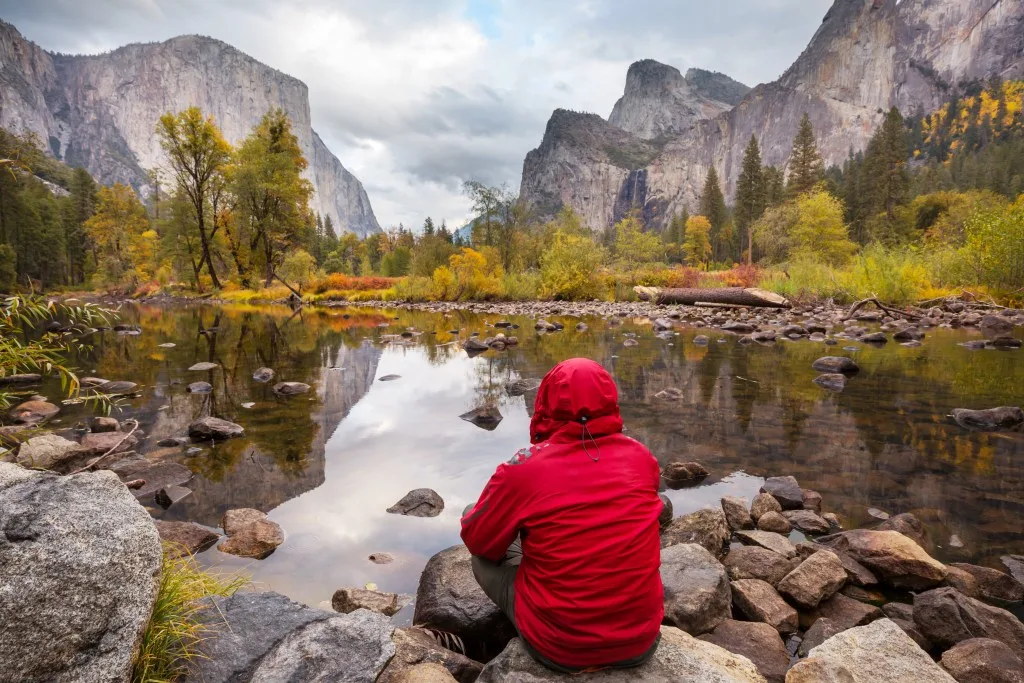The word “semite” makes up the bulk of the word “Yosemite.”
So what’s the connection between this famous national park and the Jewish community, or is there one at all?
Let’s find out!
What Is Yosemite National Park?
Covering nearly 1,200 square miles, Yosemite is one of the nation’s best-known national parks and one of its oldest. And with more than 3 million visitors a year, it’s the most-visited of California’s nine national parks.
The mountainous park is in the east-central part of the state on the northwestern edge of the Sierra National Forest. This mostly wilderness area is about 100 miles southeast of Sacramento and about 140 miles east of San Francisco.
What Is Yosemite Most Known For?
Yosemite has many claims to fame, but you could probably pinpoint its incredible waterfalls as its most popular feature. The most famous is Yosemite Falls, which is the tallest one in North America. It has three different cascades that combine to total a dramatic plunge of around 2,400 feet.
Other well-known waterfalls at Yosemite include Sentinel Falls, cascading around 2,000 feet, and Horsetail Fall and Ribbon Fall.
There are countless others, especially in the spring and early summer. That’s because of the massive amounts of snowmelt from the Sierra Nevada mountains.
Pro Tip: Spend the night at one of these 11 Free Yosemite Camping Spots You’ll Love.

Why Is the Word Semite in Yosemite?
The term “Semite” generally refers to people from the Middle East, such as Jews and Arabs, who speak a Semitic language. So what’s this have to do with a natural landmark in the American West?
Nothing, as it turns out. It’s simply an etymological coincidence that the two words are similar. The name Yosemite actually refers to some of the earlier inhabitants of the area that’s now a national park. It’s not a literal translation, however, and there has been some confusion over the years about its exact meaning.
There’s another difference, too. To properly pronounce Yosemite, you should use four syllables, with the accent on the second one. More or less, it sounds like this: Yo-SEM-uh-tee. Occasionally, however, you’ll hear someone mispronounce it as Yo-SEM-ite, just because of how it’s spelled.
Who Were the Early Inhabitants of Yosemite?
The name Yosemite actually refers to some of the native inhabitants of the area that’s now a national park. It’s from the language of the traditional Miwok tribe, which occupied the valley until the early 1850s.
According to stories passed down through the generations, the Miwoks used the word (or a similar one) to describe the Ahwahnee people. There’s some confusion about its actual meaning, but many historians believe it translates roughly to “those who kill.”
According to the National Park Service (NPS), research suggests that people have occupied the area for up to 8,000 years. The U.S. Army forcibly removed the last of the indigenous tribes a few years after the Gold Rush of 1849.

When Did Yosemite Become a National Park?
From their first look at the stunning Yosemite Valley, visitors know this is a special place that we should preserve.
President Abraham Lincoln shared that sentiment back in 1864 when he signed legislation that gave Yosemite official protection.
This directly paved the way for preserving the land that became Yellowstone National Park just eight years later. Yosemite followed suit by officially becoming a national park in 1890.
What Are the Best Things to Do in Yosemite National Park?
Though many people envision those scenic waterfalls when they think of Yosemite, the park has many other attractions. Tree gazing and rock climbing are two other chief pursuits.
The park is home to several hundred giant sequoia trees, which are incredibly imposing when you see them in person. Some of these monsters tower to 300 feet or more and are a few thousand years old.
Yosemite has many magnificent granite peaks, some of which are literal rites of passage for dedicated climbers. The stately El Capitan stands at 3,600 feet over Yosemite Valley. Another alluring natural feature is Half Dome, a sloping granite grade that hikers ascend to almost 5,000 feet.
Pro Tip: We took a closer look to uncover Can You Car Camp At Yosemite National Park?
When Is the Best Time to Visit Yosemite National Park?
Yosemite National Park is so popular that it’s jam-packed with tourists all summer long. To avoid the crowds and the long lines to get in, we suggest planning your trip for earlier in the year.
Time your visit just right in the springtime to experience as many of the free-flowing waterfalls as possible. The month of May is kind of the sweet spot because the daytime temperatures are mild enough for outdoor activities. By then, many roads and trails will reopen after being covered with snow.
As an alternative, early fall is another fantastic time to visit Yosemite.
Just be sure to pronounce its name correctly, as three syllables, to avoid any confusion.
Discover the Best Free Camping Across the USA
To be honest with you, we hate paying for camping. There are so many free campsites in America (with complete privacy).
You should give it a try!
As a matter of fact, these free campsites are yours. Every time you pay federal taxes, you’re contributing to these lands.
Become a FREE CAMPING INSIDER and join the 100,000 campers that love to score the best site!
We’ll send you the 50 Best Free Campsites in the USA (one per state). Access the list by submitting your email below: